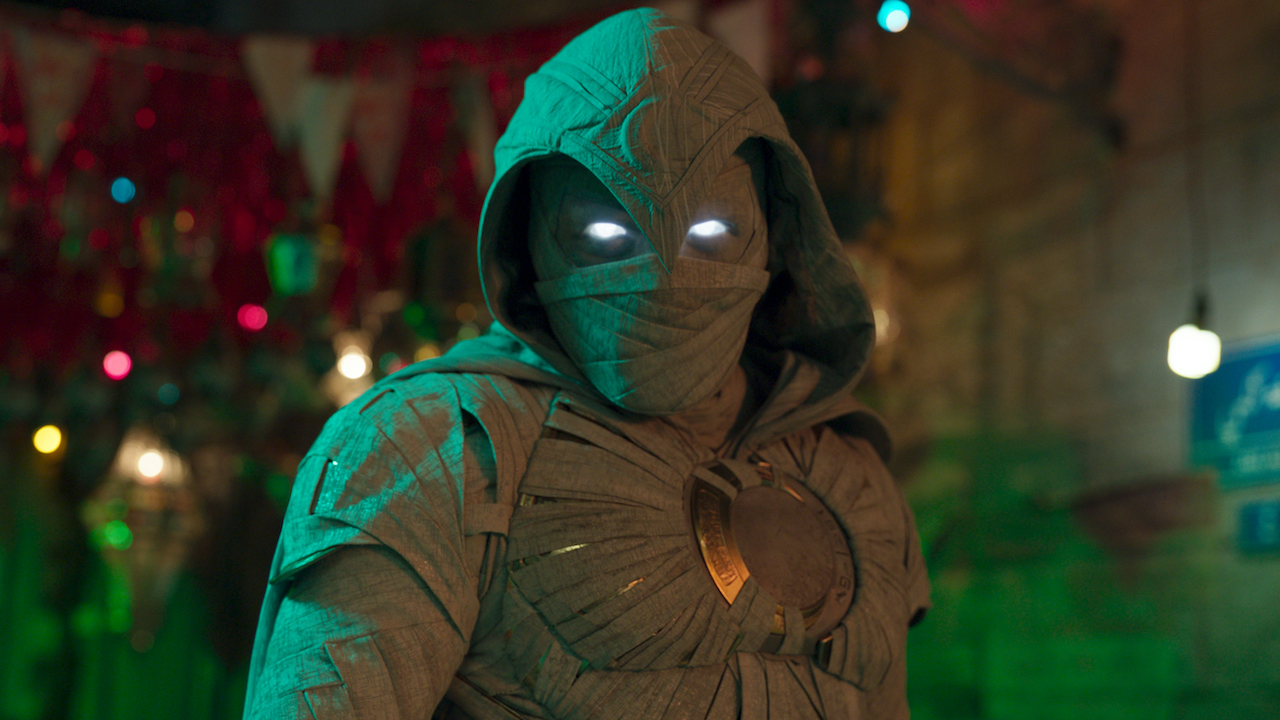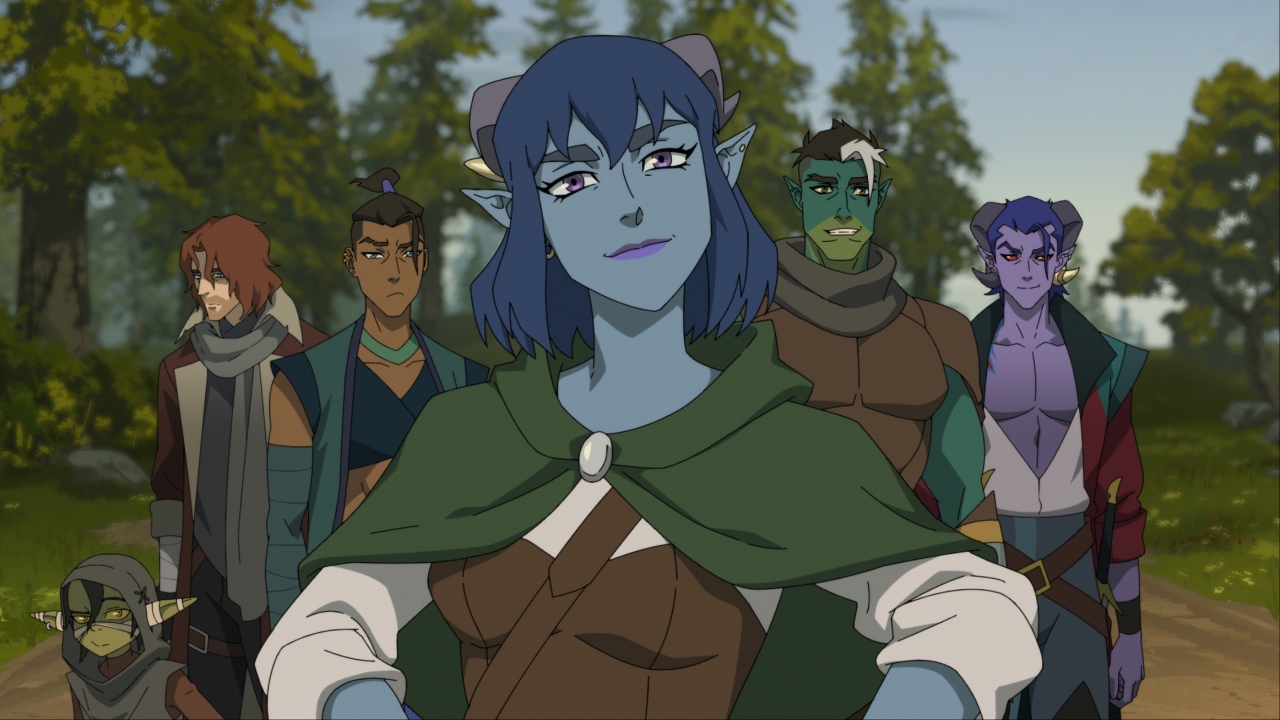Moon Knight's EP Told Us Why The Disney+ Series Featured So Few MCU Connections, And It Totally Makes Sense
You don’t need to have an encyclopedic knowledge of the MCU to follow along with Moon Knight.

This far into the Marvel Cinematic Universe journey, tie-ins, references and overall connections to other corners of the superhero franchise when watching one of its movies or Disney+ shows. And yet, Moon Knight featured barely any of those. If you haven’t kept up on the Marvel movies and TV shows, you don’t need to be worried about having trouble following along with this Marvel series, as it’s one of the most self-contained MCU stories we got since the franchise launched over a decade ago. According to Moon Knight executive producer Grant Curtis, the show having only a few MCU connections wasn’t something planned from the start, and his explanation for why it happened makes sense.
Following the release of the Moon Knight finale, titled “Gods and Monsters,” I chatted with Grant Curtis about his work on the latest MCU series available to watch with a Disney+ subscription, and kicked off the interview by asking him what was the rationale behind making Moon Knight more of a standalone affair compared to other MCU projects. He answered:
It was never anything we consciously set off to do. Because when you’re in the writers room with the amazing Jeremy Slater, who was our head writer on Day One in our fabulous writers room, the MCU is populated by such amazing characters in such amazing locations and storylines, you want to grab at everything. You want to use every tool out there that has been masterfully created by Kevin [Feige], Lou [D’Esposito] and Victoria [Alonso], but then the other thing you start to realize on Day Two of the writers room, all Marvel Cinematic Universe offerings are based first and foremost on character. And in this, it’s obviously based on Marc Spector, and then by design Steven Grant and Jake Lockley. And the more we really drilled down on making his character study, his character journey as enriching as possible and as engaging as possible, the more all that other stuff started to fade away, and we realized we needed to focus first and foremost on his journey, his world, the people who he comes in contact with.
So when work on Moon Knight started, establishing straightforward connections with other areas of the MCU was on the table. Moon Knight creator Jeremy Slater even told The Direct that he “tried very hard” to throw some Eternals into the show, including Kumail Nanjiani’s Kingo, for a flashback sequence set in ancient Egypt. That particular idea didn’t end up working out due to how expensive it would have been to pull off, but as Grant Curtis informed me, he and the other creative minds realized that Moon Knight needed to chiefly focus on character like so many other MCU projects have prioritized, and as the work continued, any other ideas for connective tissue were set aside. That reasoning holds up, not to mention that Moon Knight’s earliest comic book appearances were often more self-contained stories, at least compared to characters like Iron Man and Spider-Man.
That’s not to say that the Moon Knight series was entirely devoid of MCU references, as both Madripoor (the city we first visited in The Falcon and the Winter Soldier) and the Ancestral Plane (an afterlife shown in Black Panther) were both brought up. Overall though, it was decided Moon Knight didn’t need to delve too deeply into this aspect of MCU storytelling, especially once Oscar Isaac got involved. As Grant Curtis put it:
So again, it wasn’t on purpose, but the other connectivity started to fade away. And the connectivity is there that you allude to, Madripoor is mentioned in Episode 3 and there’s other points of connectivity, but it really became all about character. And once Oscar Isaac came aboard and his amazing performance, he just wanted to stay with it. That’s how that all shook out, it wasn’t part of some grand plan, it was just making the best character study we could.
With Moon Knight having been around since 1975, the show certainly wasn’t lacking in source material specific to the character to pull from, which included the game-changing post-credits scene that finally spotlighted Jake Lockley after it was decided not to directly feature him in earlier episodes. Plus, Moon Knight also got to pull from a corner of Marvel lore that hadn’t been explored in the MCU yet by turning May Calamawy’s Layla El-Faouly into the MCU’s version of Scarlet Scarab. As of right now, it’s unclear if Moon Knight will return for another season, but if that does happen, I’m curious to see if the next batch of episodes will have more direct ties to the rest of the MCU, or if it’ll follow in the footsteps of Season 1 and only include a few “blink and you’ll miss it” references.
While we wait for news on Moon Knight’s MCU future, check out our guide of upcoming Marvel TV shows to learn what’s on the way in the small screen corner of this franchise, or feel free to peruse through the lineup of upcoming Marvel movies.
Your Daily Blend of Entertainment News

Connoisseur of Marvel, DC, Star Wars, John Wick, MonsterVerse and Doctor Who lore, Adam is a Senior Content Producer at CinemaBlend. He started working for the site back in late 2014 writing exclusively comic book movie and TV-related articles, and along with branching out into other genres, he also made the jump to editing. Along with his writing and editing duties, as well as interviewing creative talent from time to time, he also oversees the assignment of movie-related features. He graduated from the University of Oregon with a degree in Journalism, and he’s been sourced numerous times on Wikipedia. He's aware he looks like Harry Potter and Clark Kent.
